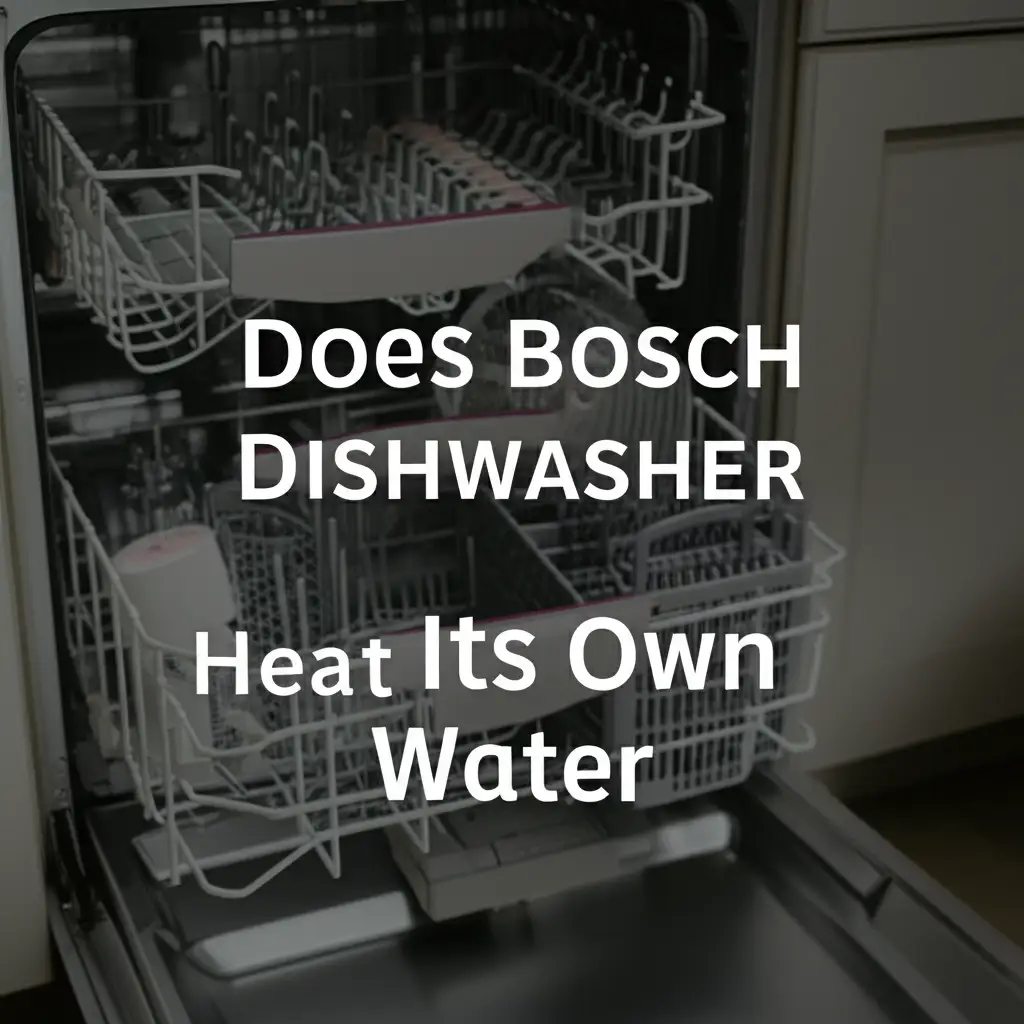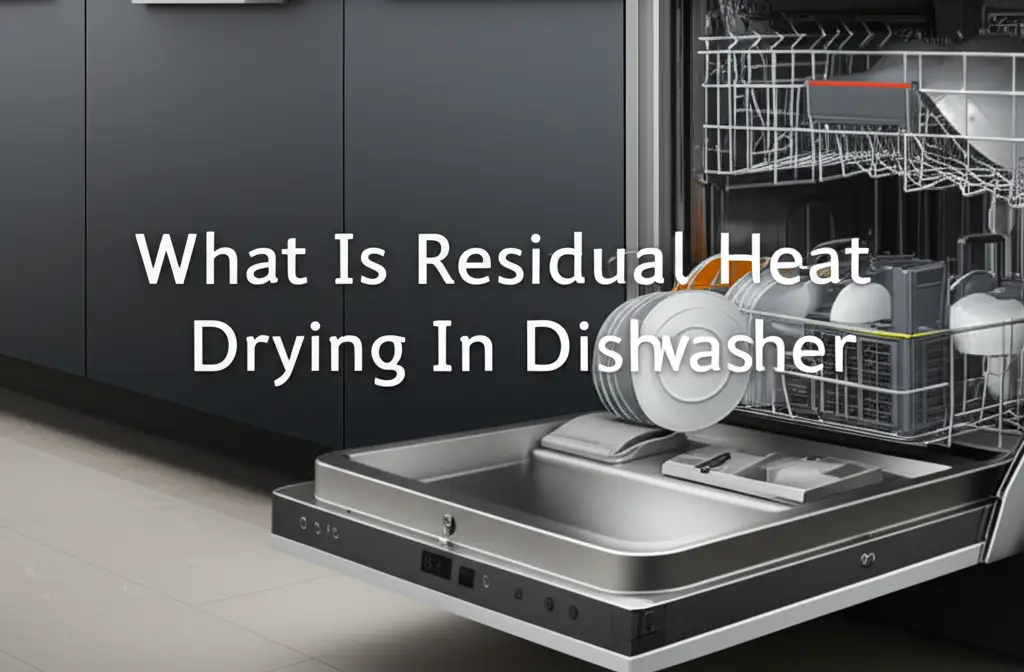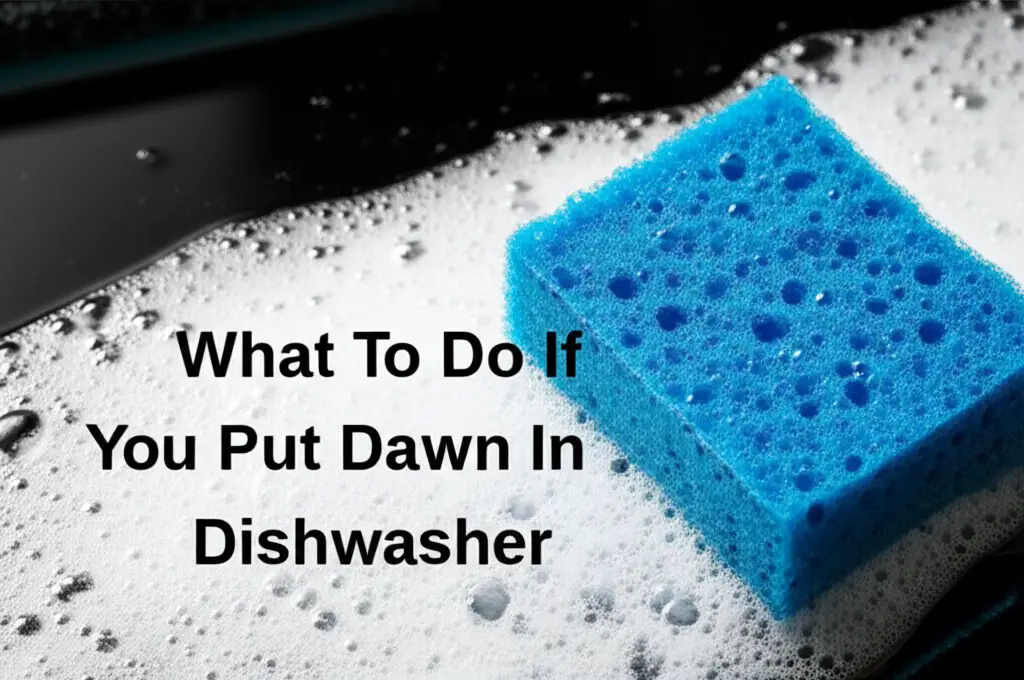· Elira Thomsen · Home Appliances · 13 min read
Does Bosch Dishwasher Heat Its Own Water

Bosch Dishwasher Water Heating: Does It Heat Its Own Water?
When you consider buying a new dishwasher, a common question arises: “Does Bosch dishwasher heat its own water?” It is a good question. Many people wonder about this vital function. You want your dishes to come out sparkling clean. Hot water is a key part of that process. Without proper heating, cleaning results suffer. Bosch dishwashers are famous for their quiet operation and cleaning power. But their water heating method differs from many other brands. I have always found this unique design interesting. This article explores how Bosch dishwashers heat water. It covers the specific technology they use. You will learn why Bosch chooses this path. We will also discuss how it affects washing and drying. Understanding this helps you use your appliance better.
Takeaway
- Bosch dishwashers heat their own water using internal elements, not exposed coils.
- They use a “flow-through” or “sump heating” system for precise temperature control.
- This method prevents plastic melting and offers energy efficiency benefits.
- Hot water is crucial for both effective cleaning and condensation drying.
- Regular maintenance helps ensure optimal heating performance.
Yes, a Bosch dishwasher heats its own water. Unlike many dishwashers with visible heating coils at the bottom, Bosch uses a different internal heating method. They use a flow-through or sump heating system. This system heats the water as it circulates inside the machine. This design ensures water reaches the ideal temperature for cleaning.
The Bosch Water Heating Method: An Overview
Bosch dishwashers use a sophisticated system to heat water. They do not rely on an exposed heating element at the bottom. This is a common feature in many traditional dishwashers. Instead, Bosch appliances integrate heating differently. They often use a “flow-through” heater or a “sump heater.” This heater is typically located underneath the washing chamber. It warms the water as it passes through. This design is compact. It allows for more interior space for dishes.
This method also contributes to safety. There is no exposed hot coil. This means plastic items placed on the bottom rack will not melt. This is a big concern with other dishwasher types. The Bosch system ensures water reaches specific temperatures for different cycles. This precise temperature control helps achieve optimal cleaning results. It ensures tough food residues break down. The water is heated internally. This means the dishwasher does not depend solely on your home’s hot water supply for high temperatures. It can boost the water temperature as needed. This unique approach sets Bosch apart. Many homeowners appreciate this difference. It contributes to both performance and peace of mind. You can learn more about general dishwasher heating systems at Do Dishwashers Have Water Heaters.
Why Bosch Differs: The Absence of Exposed Heating Coils
Bosch dishwashers stand out because they do not have a visible heating coil. Most dishwashers have a heating element. This coil sits on the floor of the wash tub. This element heats the water. It also helps dry dishes. Bosch engineers chose a different path. They designed their dishwashers without this exposed coil. This decision has several benefits. It prevents plastic items from melting. You can place plastic containers on the lower rack without worry. My family always appreciates this feature. It adds a layer of convenience and safety.
The absence of an exposed coil also impacts drying. Traditional dishwashers use the hot coil for heat drying. Bosch uses condensation drying. This system works without extra heat from a coil. The hot water from the wash cycle heats the inner walls. Moisture then condenses on the cooler stainless steel. This creates a more energy-efficient drying process. It uses less electricity than coil-based drying. This design choice contributes to Bosch’s reputation. They are known for energy efficiency. They are also known for protecting dishware. This method also often leads to quieter operation. Less heat is radiated directly into the tub. This helps maintain a comfortable kitchen environment.
The Power of Sump Heating: How Bosch Achieves Hot Water
Bosch dishwashers rely on what is called “sump heating.” This is their primary method for getting water hot. The sump is a small reservoir at the bottom of the dishwasher. It collects water during the wash cycle. Inside this sump, a small, powerful heating element is located. This element is not exposed to the main washing area. Water flows into this sump. The heater quickly raises its temperature. Then, the heated water is pumped back into the spray arms. These arms then spray the hot water over your dishes.
This system offers very precise temperature control. Bosch dishwashers can heat water to exact temperatures. Different wash cycles require different heat levels. For example, a sanitize cycle needs very hot water. Delicate cycles need less heat. The sump heater makes this precision possible. It also heats water quickly. This can help shorten wash times. It ensures consistent water temperature throughout the cycle. This consistency is vital for effective cleaning. It helps dissolve food particles and grease efficiently. This method is a key part of Bosch’s cleaning power. It ensures every dish gets the optimal hot water treatment.
Optimizing Wash Cycles with Bosch’s Precise Temperature Control
Bosch dishwashers offer various wash cycles. Each cycle is designed for specific cleaning needs. The precise temperature control is vital for these cycles. Bosch’s heating system allows for this accuracy. It delivers water at the exact temperature required. This ensures optimal cleaning performance. For example, the Sanitize cycle reaches very high temperatures. This kills bacteria and germs. It provides a hygienic clean. My experience shows that this cycle makes a real difference. Dishes come out feeling cleaner.
Delicate cycles, however, use lower temperatures. This protects sensitive items like fine china and delicate glasses. The dishwasher adapts its heating precisely. This prevents damage to fragile items. Standard cycles use moderate temperatures. These temperatures are ideal for everyday dishes. They effectively remove food residues. The system ensures consistent heat throughout the wash. This means every part of the wash benefits. It helps dissolve detergents fully. This leads to better stain removal. This intelligent heating system truly enhances cleaning power. It makes sure your dishes are not just clean, but perfectly clean for their type. You can see how water usage varies across cycles at Does Quick Wash Use Less Water Dishwasher.
Beyond Washing: Water Heating’s Role in Bosch Drying Systems
Water heating plays a critical role in Bosch’s unique drying system. Unlike many dishwashers, Bosch typically does not use an exposed heating element for drying. Instead, they rely on condensation drying. This system leverages the heat from the final hot rinse. The Bosch dishwasher heats the water to a very high temperature during the final rinse cycle. This hot water heats the dishes and the inner stainless steel tub. After the final rinse, the water drains away. The hot dishes and tub start to cool down.
As the hot, moist air inside the dishwasher cools, the moisture condenses. This condensation forms as water droplets on the cooler stainless steel interior. This is because stainless steel cools faster than the dishes. The condensed water then drips down to the sump and drains away. This process leaves your dishes drier. Some Bosch models enhance this with Zeolite technology. Zeolite is a natural mineral that absorbs moisture and releases heat. It further improves drying efficiency. This method is energy-efficient. It also protects plastic items from melting. This is because there is no direct heat element for drying. Understanding this process highlights Bosch’s innovative design. It links cleaning and drying seamlessly. For more detail on this, check out What Is Residual Heat Drying in Dishwasher.
Energy Efficiency and Bosch’s Heating Technology
Bosch’s water heating technology is designed with energy efficiency in mind. Their sump or flow-through heating system is very effective. It heats only the water needed for a specific cycle. This prevents wasted energy. Traditional dishwashers with exposed coils sometimes heat the air inside the tub. Bosch focuses on heating the water directly. This targeted approach uses less electricity overall. The condensation drying system also contributes to energy savings. It eliminates the need for an additional, high-energy heating element during the drying phase.
Many Bosch dishwashers boast Energy Star ratings. This rating indicates superior energy efficiency. It means the appliance uses less energy and water. This saves you money on utility bills over time. My own energy bills have shown the benefit. Investing in an energy-efficient appliance pays off. The precise temperature control also prevents overheating. This further conserves energy. Bosch designs their appliances to be environmentally friendly. Their heating method reflects this commitment. It ensures effective cleaning with a lower energy footprint. This makes Bosch a popular choice for eco-conscious homeowners.
Maintaining Your Bosch for Optimal Heating Performance
Proper maintenance is essential for your Bosch dishwasher. It ensures the heating system works efficiently. Regular cleaning prevents buildup that can hinder performance. I always make sure to keep my dishwasher clean. First, clean the filters regularly. Food particles and grease can accumulate there. This buildup can block water flow. Restricted water flow impacts heating. It also prevents proper spraying. Remove the filters and rinse them under running water. Use a soft brush for stubborn bits.
Second, run a maintenance cycle periodically. Many Bosch models have a specific program for cleaning. This cycle uses hot water and a dishwasher cleaner. This helps remove mineral deposits and grease. These deposits can build up on heating elements. They can also accumulate on internal components. Bosch dishwashers need a clean environment to perform well. You can find more information on this at How to Run Clean Cycle on Bosch Dishwasher. Hard water areas may need descaling. Use a dishwasher descaler product. Follow the product instructions carefully. Ensure rinse aid is always full. Rinse aid helps with the condensation drying process. It also helps prevent water spots. Keeping your Bosch well-maintained extends its life. It also guarantees hot, clean dishes every time.
Troubleshooting Common Bosch Water Heating Issues
Even with Bosch’s reliable design, issues can arise. Sometimes, your dishwasher may not heat water properly. This often leads to dishes not getting clean. They may also come out wet. One common sign is dishes still being cold after a cycle. The detergent might not dissolve fully either. First, check the power supply. Ensure the dishwasher is receiving power. A tripped circuit breaker can stop heating. Reset the breaker if needed. Next, verify your chosen cycle. Some cycles use lower temperatures. Make sure you select a hot wash cycle. For example, the “Sanitize” option ensures maximum heat.
Check the water supply line. Ensure the hot water valve under the sink is fully open. A partially closed valve restricts hot water. Also, inspect the dishwasher filters. Clogged filters can affect water flow. This impacts the heating process. Clean them thoroughly. If dishes are wet, but not dirty, it might be a drying issue. This is separate from heating. However, proper heating is vital for condensation drying. If problems persist, it could be a faulty heating element. This requires professional service. Do not attempt to repair it yourself unless you are qualified. Consult your Bosch owner’s manual for specific error codes. These codes provide clues about the problem. Sometimes, a simple reset can resolve minor glitches. If your dishwasher has problems draining, it might also affect overall performance. For drainage issues, see How to Get the Dishwasher to Drain.
Bosch Heating vs. Traditional Heating Elements: A Comparison
When comparing Bosch’s heating method to traditional dishwashers, clear differences emerge. Traditional dishwashers often use an exposed heating element. This coil sits at the bottom of the tub. It heats water directly. It also heats the air for drying. This method is simple and effective for many. However, it comes with specific drawbacks. Plastic items can melt if they fall onto the hot coil. This is a common complaint among users. The exposed element also uses more energy for drying. It actively heats air.
Bosch, conversely, uses an internal flow-through or sump heater. This element is never exposed to dishes. This completely eliminates the risk of melting plastic. This design provides precise water temperature control. It heats only the water required. This makes it more energy-efficient for the wash cycle. For drying, Bosch relies on condensation. The hot water from the final rinse heats the tub and dishes. Then, moisture condenses on the cooler stainless steel walls. This method uses less energy for drying. It also provides a quieter operation. While dishes might not always come out “bone dry” like with heated-coil drying, the energy savings and safety benefits are significant. Bosch’s approach prioritizes efficiency and gentle care for all dishware. This makes it a preferred choice for many homeowners.
Frequently Asked Questions
Does Bosch use an external water heater? No, a Bosch dishwasher does not use an external water heater. It integrates its own heating system internally. This system heats the water as it circulates inside the machine. This ensures precise temperature control for cleaning cycles. It means the dishwasher can boost the water temperature beyond what your home’s hot water supply provides.
How hot does a Bosch dishwasher get the water? Bosch dishwashers can heat water to various temperatures depending on the cycle. For example, the Sanitize cycle often heats water to around 162°F (72°C). Standard cycles operate at lower, but still effective, temperatures. This precise heating ensures optimal cleaning performance for different types of loads and soil levels.
Why are Bosch dishwashers known for quiet operation? Bosch dishwashers are known for their quiet operation due to several design features. Their internal heating system, without an exposed element, reduces noise. Multiple layers of insulation, a quiet motor, and advanced spray arm designs also contribute to their low decibel levels. This makes them ideal for open-concept living spaces.
Can I use a Bosch dishwasher without hot water hookup? While you technically can, it is not recommended for optimal performance. Bosch dishwashers are designed to connect to your home’s hot water supply. This helps them reach target temperatures more quickly and efficiently. Connecting to cold water means the dishwasher must work harder and longer to heat water, using more energy.
What is CrystalDry technology? CrystalDry is an exclusive Bosch drying technology found in some models. It uses Zeolite, a natural mineral, to absorb moisture and convert it into heat. This process provides enhanced drying performance, even on plastic items, without an exposed heating element. Dishes come out significantly drier compared to standard condensation drying.
How often should I clean my Bosch dishwasher to ensure proper heating? You should clean your Bosch dishwasher’s filters regularly, ideally weekly or bi-weekly depending on usage. Running a full cleaning cycle with a dishwasher cleaner every 1-3 months is also recommended. This prevents mineral buildup and food particles from impacting the heating system and overall performance.
Conclusion
Understanding how a Bosch dishwasher heats its own water reveals its innovative design. Unlike many conventional dishwashers, Bosch units rely on an internal heating system. This system includes flow-through or sump heaters. They efficiently bring water to precise temperatures. This unique approach means no exposed heating coils. This prevents plastic items from melting. It also contributes to energy efficiency. The hot water is crucial not only for powerful cleaning but also for Bosch’s effective condensation drying.
Maintaining your Bosch dishwasher ensures its heating system performs optimally. Regular filter cleaning and periodic maintenance cycles are simple steps. These steps keep your appliance in top condition. Bosch’s commitment to quiet operation and precise temperature control makes it a standout choice. This appliance provides effective, efficient cleaning. It offers peace of mind. Consider a Bosch for your home. Experience the difference in cleaning and energy savings. Visit our site to explore more home appliance solutions.
- Bosch dishwasher
- water heating
- Sump Heating
- residual heat drying
- dishwasher technology
- efficient cleaning
- appliance care





